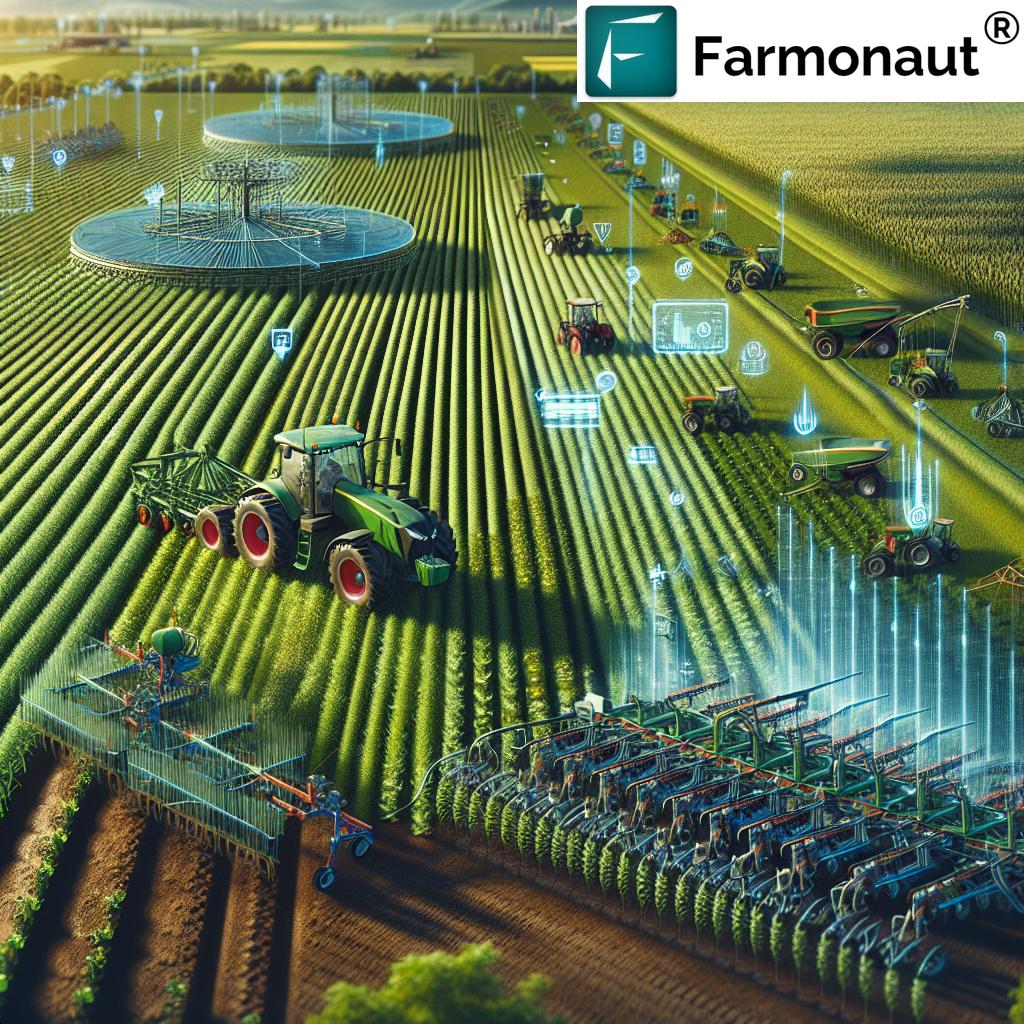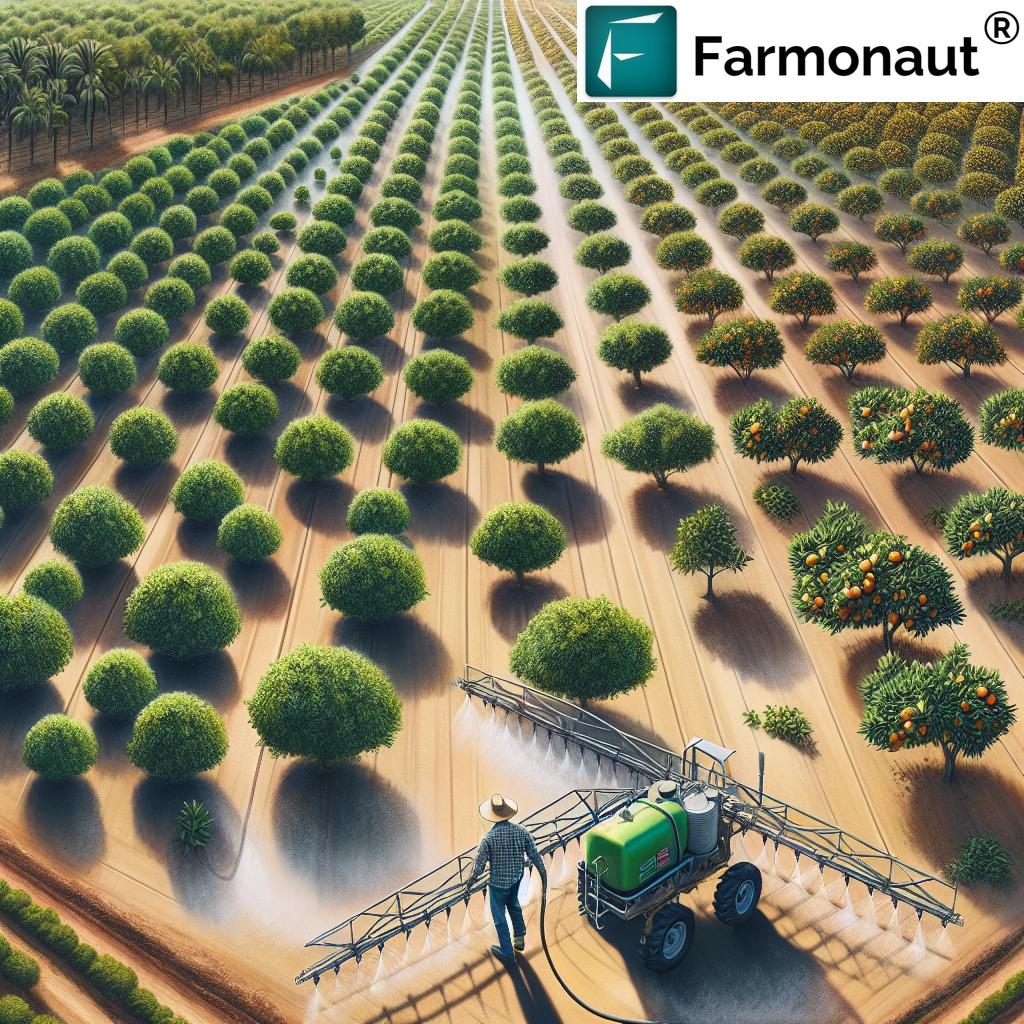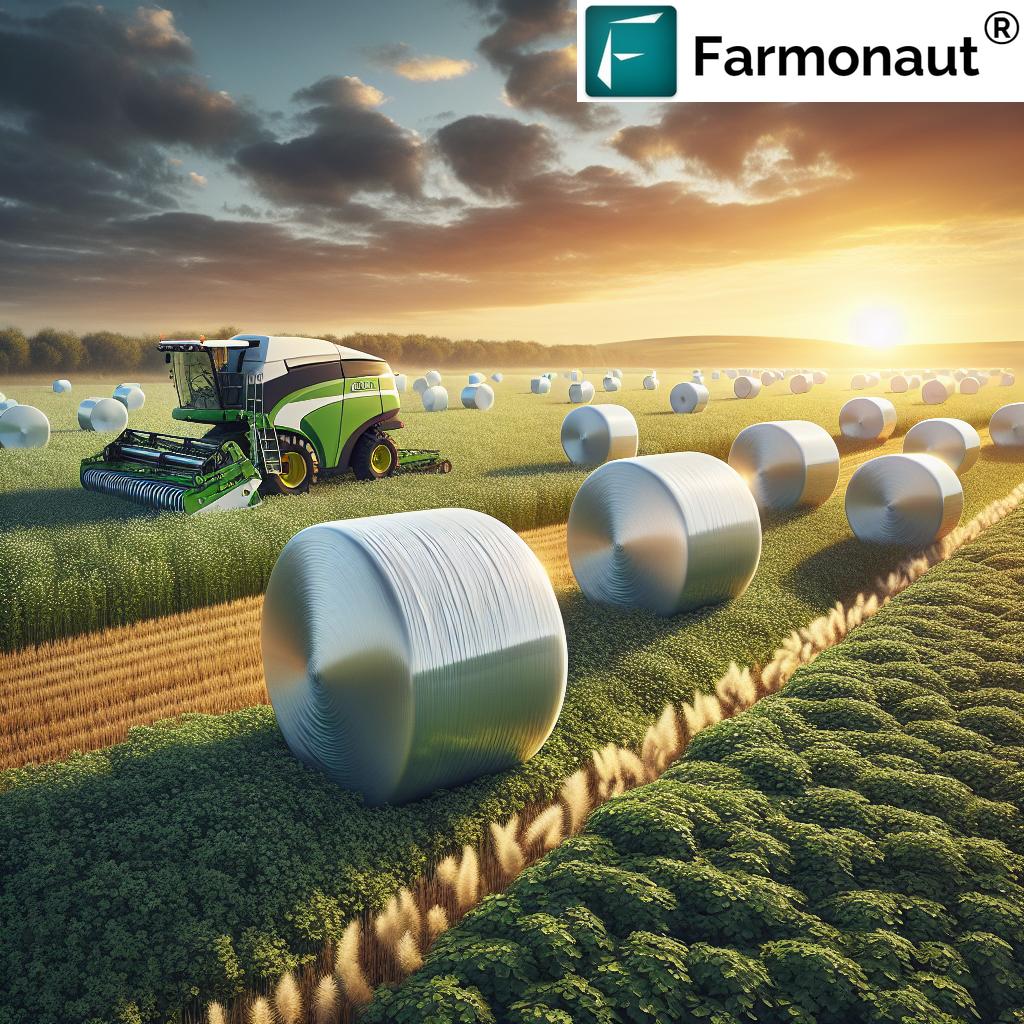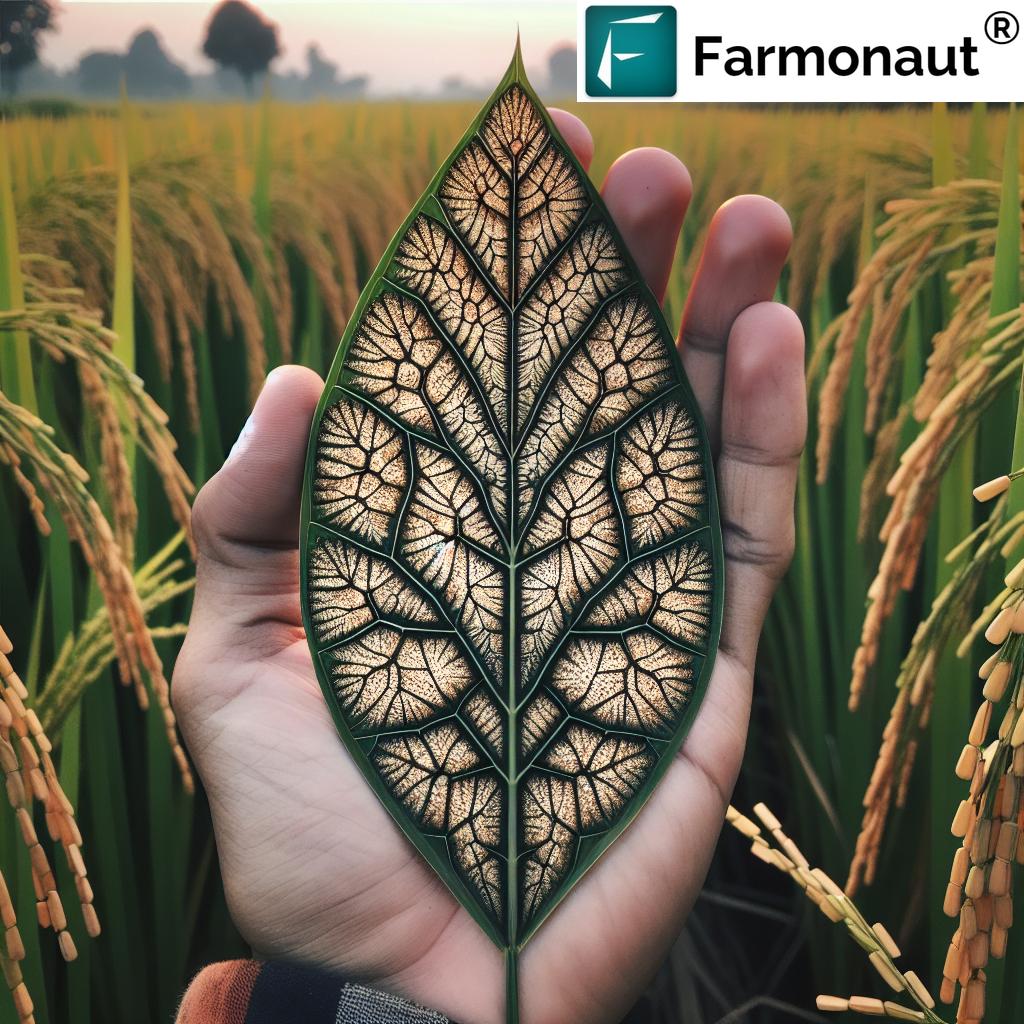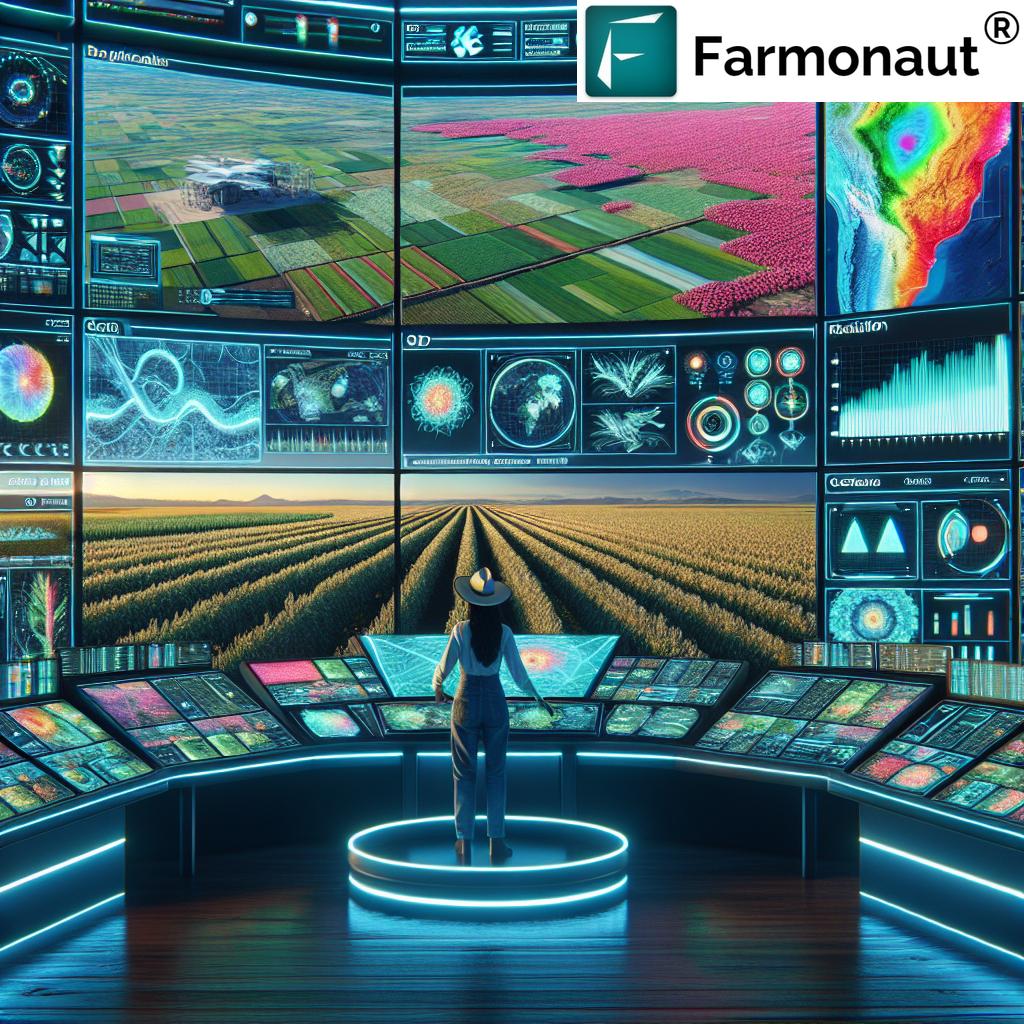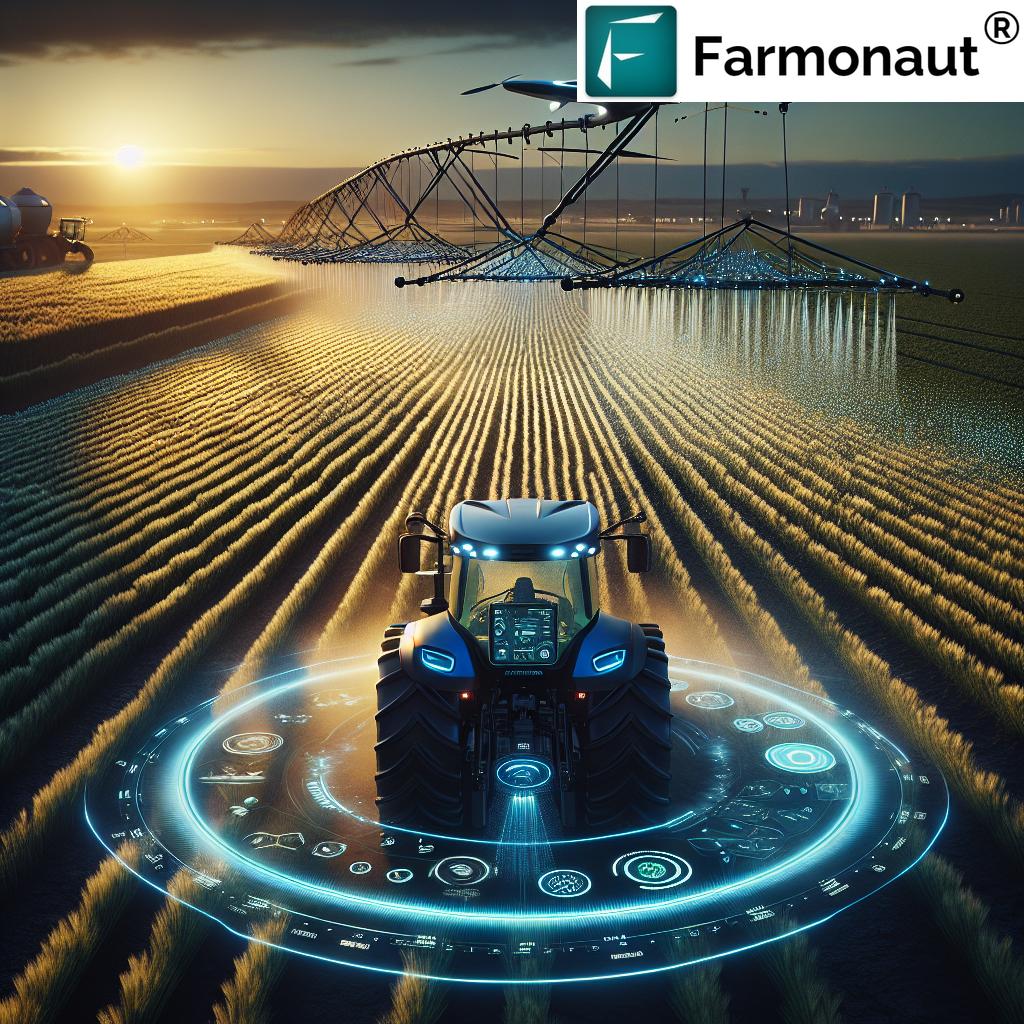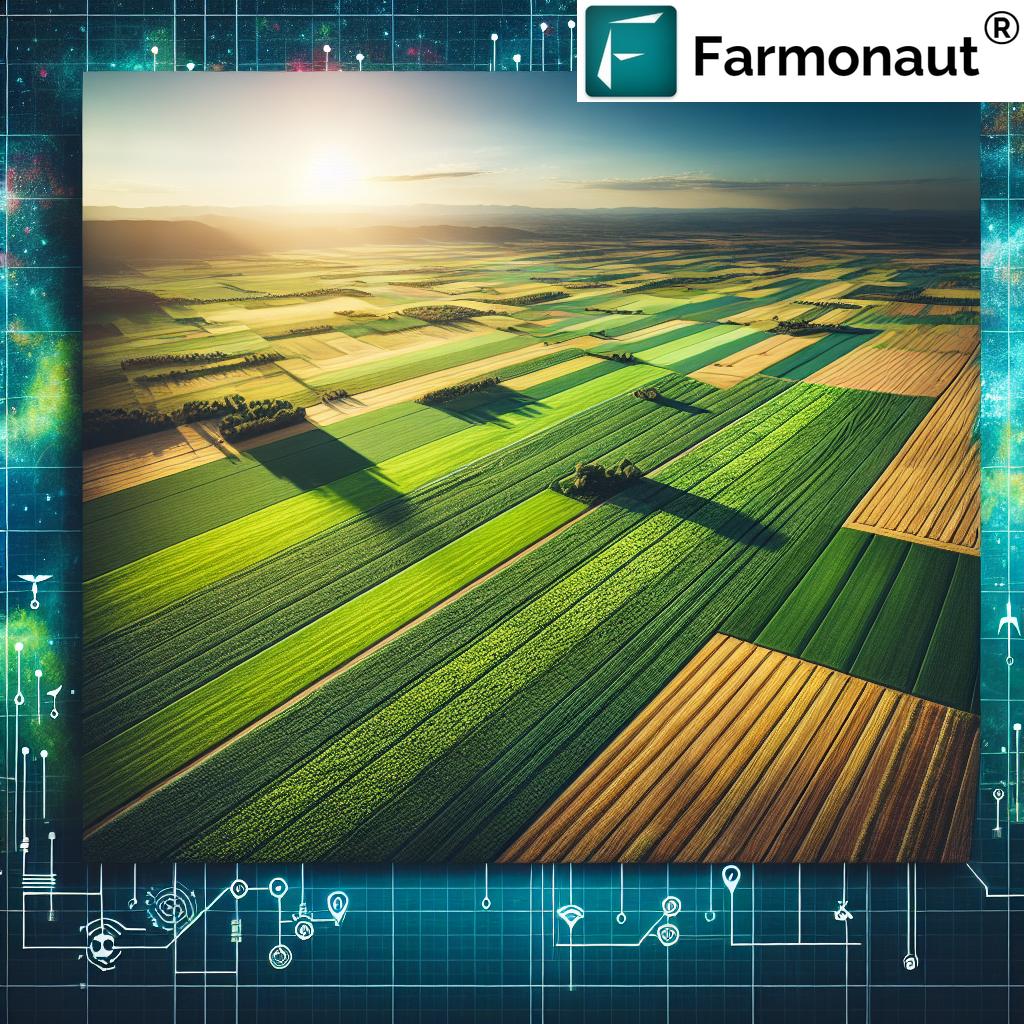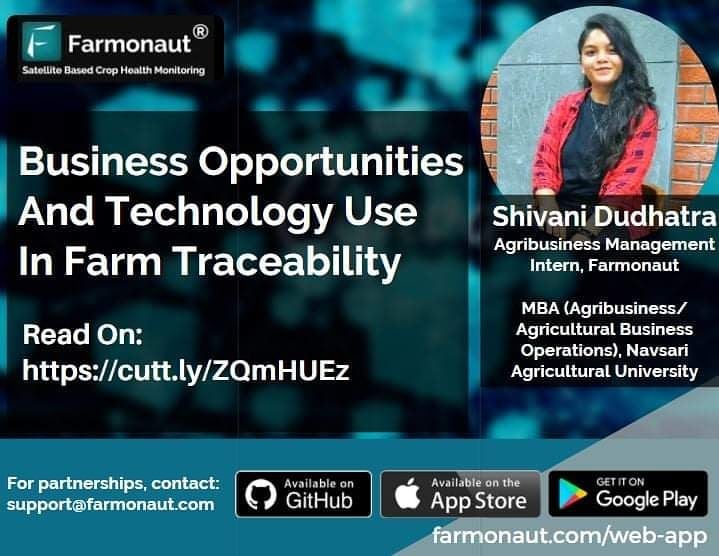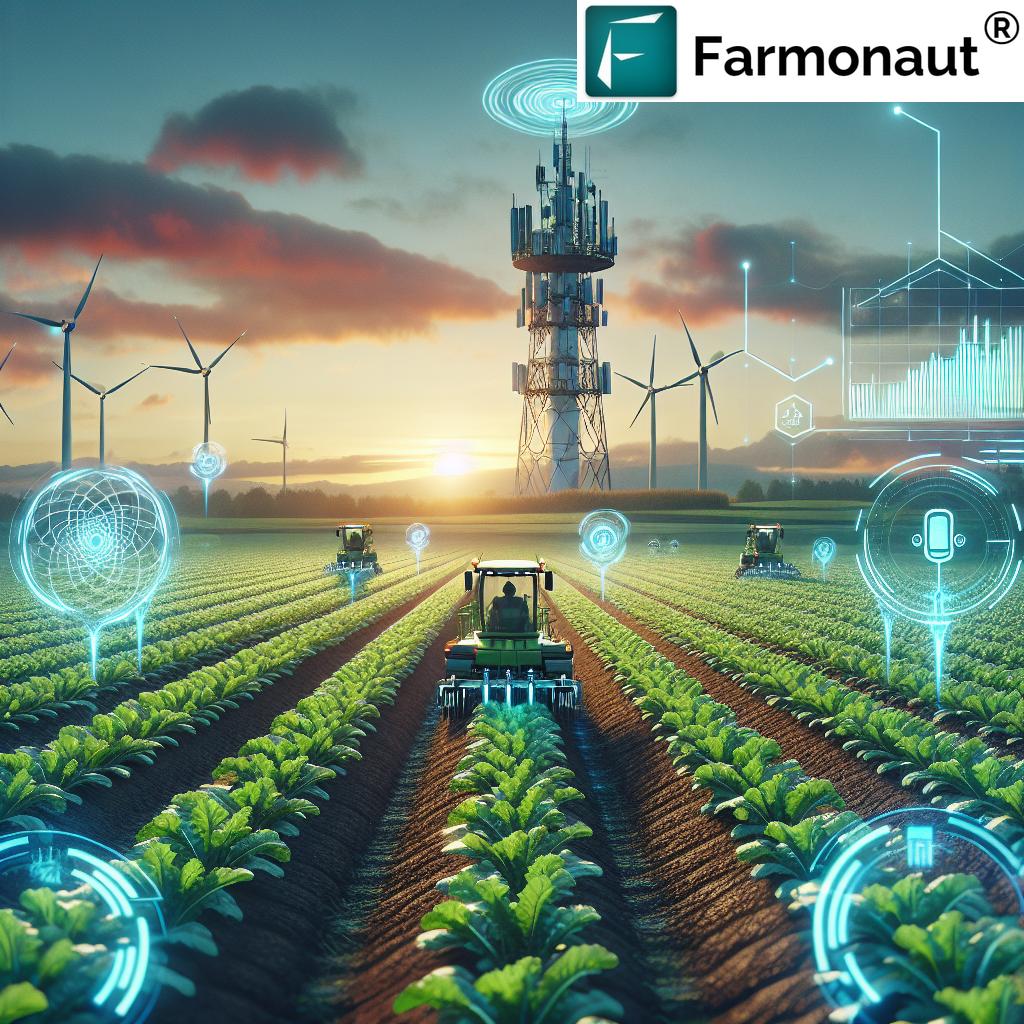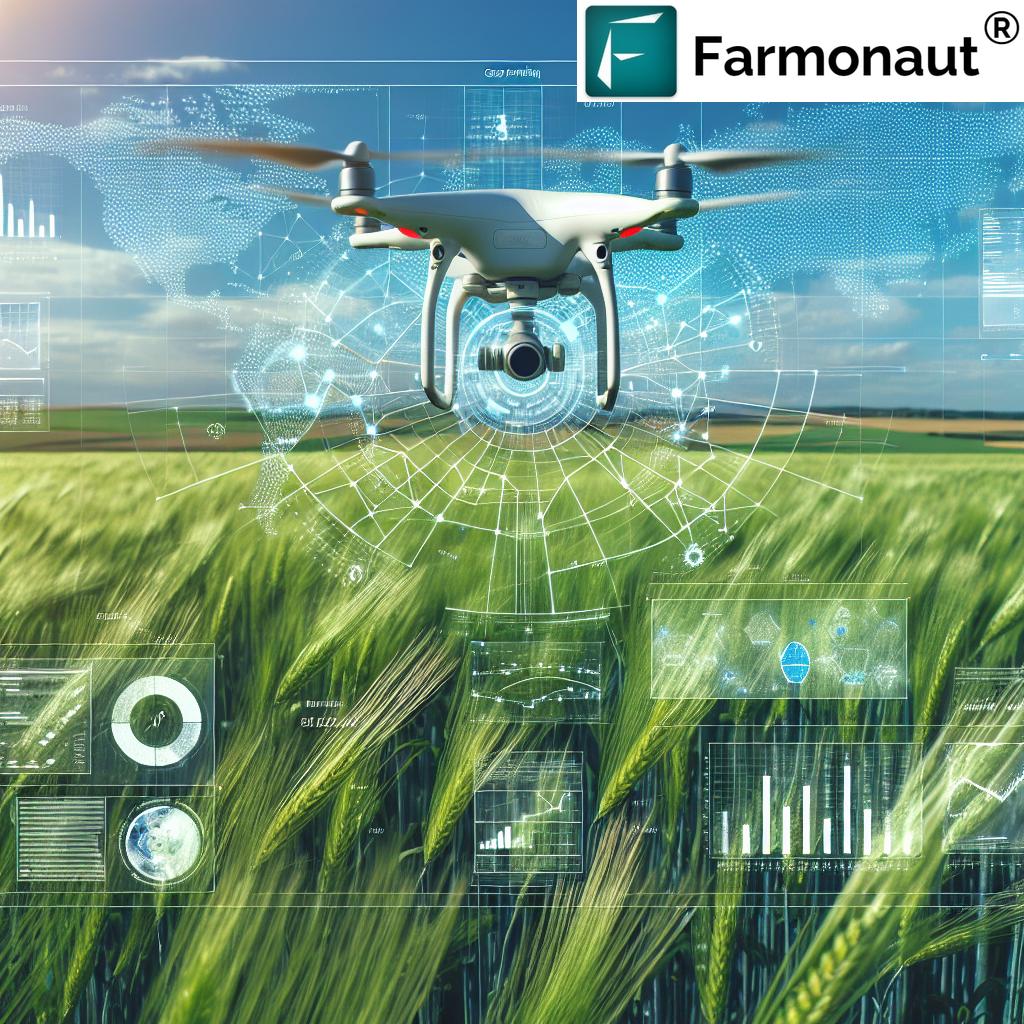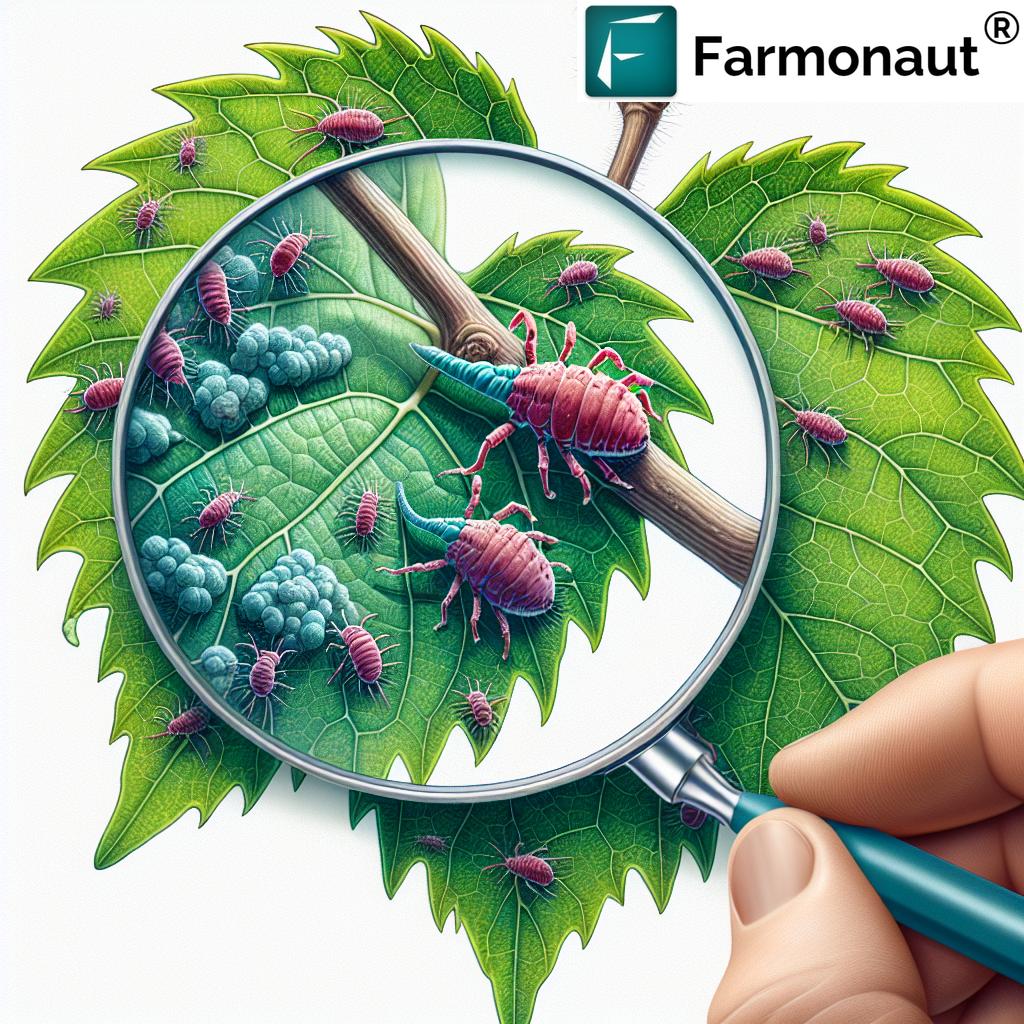Agriculture Process: 7 Sustainable Farming Innovations
“Precision agriculture can increase crop yields by up to 20% while reducing fertilizer use by 10-15%.”
Table of Contents
- Introduction
- Understanding the Agriculture Process: Key Stages
- 7 Sustainable Farming Innovations Shaping the Future
- Comparative Features and Estimated Impact Table
- Farmonaut in Action: Precision Technologies for Sustainable Agriculture
- Agricultural Challenges and Future Directions
- Farmonaut Subscriptions
- Frequently Asked Questions
- Conclusion
Introduction
Agriculture is not only the backbone of our global food system but the cornerstone of human civilization itself. From nourishing billions of people to providing fiber and raw materials for countless industries, the agriculture process is vital for sustaining life and economic growth. As climate change, environmental concerns, and the pressures of a growing global population mount, there’s an urgent need to revolutionize how we plan, plant, manage, and harvest our crops.
Modern farming innovations, especially those rooted in precision agriculture technologies and sustainable agriculture practices, are rewriting expectations for productivity, soil health, and lifecycle management. This comprehensive guide explores the key stages of the agricultural process and dives deep into seven innovative, sustainable farming practices that are paving the way toward a more resilient future.
Understanding the Agriculture Process: Key Stages
The agriculture process is an integrated series of steps that begin long before we see verdant fields or bountiful harvests. Let’s break down the core stages that underpin every successful farming and forestry operation:
1. Planning and Preparation
Effective planning is the bedrock of successful agriculture. Farmers evaluate soil health, analyze climate and weather conditions, factor in changing market demands, and select the optimal crops or livestock breeds for their land.
Operations at this stage include:
- Soil analysis: Testing soil for nutrients, pH, structure, and organic content.
- Land preparation: Tilling or applying soil treatments to enhance fertility and structure.
- Resource organization: Allocating labor, machinery, equipment, seeds, and other necessary inputs.
Modern precision agriculture technologies bring digital mapping, satellite-based field analysis, and predictive analytics into this foundational stage, setting up farms for optimized resource use and maximized yields.
2. Planting and Cultivation
- Sowing/Planting: Utilizing high-quality seeds or seedlings, planted at scientifically determined depths and spacing
- Cultivation: Managing growth through irrigation, fertilization, pest control, and regular monitoring
Advanced sensors, drone imagery, and GPS-guided devices help farmers monitor and manage each row with unprecedented accuracy, supporting crop yield optimization and reducing resource wastage.
3. Harvesting
Ripened crops reach maturity and must be harvested at just the right timing for optimal yield and quality. Modern mechanized agriculture uses combine harvesters and smart scheduling software to:
- Minimize labor costs
- Reduce crop loss and postharvest waste
- Increase productivity for large-scale farms
4. Postharvest Handling of Crops
The immediate handling of newly harvested crops is vital to maintaining quality and minimizing loss. Actions include:
- Cooling: Bringing down field heat to slow spoilage
- Cleaning & Sorting: Removing debris, sorting by size/quality
- Packing: Packaging for safe transport
Optimal postharvest management ensures agricultural products reach consumers in peak condition and meet international markets’ standards.
5. Marketing and Distribution
After handling, crops enter the critical stages of:
- Transportation: Moving products to markets using efficient logistics
- Storage: Leveraging modern temperature, humidity, and pest control in warehouses
- Sales: Reaching consumers via retailers, farmers’ markets, export
Digital market intelligence tools empower farmers to respond to price signals and consumer preferences.
6. Sustainability and Environmental Considerations
With escalating environmental challenges, sustainability is at the heart of every agricultural innovation:
- Adoption of sustainable agriculture practices like crop rotation, agroforestry, and organic inputs
- Precision tools for nutrient and water management, e.g. variable-rate fertilizers
- Emphasis on soil health management and conservation of local biodiversity
7. Technological Innovations
The guiding force behind agricultural progress today is the adoption of:
- Digital platforms and AI-based decision tools
- IoT for real-time field insights
- Blockchain for product traceability and consumer trust
Innovations like these are transforming legacy farming operations into adaptable, high-productivity systems.
7 Sustainable Farming Innovations Shaping the Future
Let’s delve into the seven sustainable farming innovations that are revolutionizing the agriculture process for farmers and the planet:
1. Precision Agriculture Technologies
The era of one-size-fits-all farming is over. Precision agriculture harnesses satellite data, sensors, GPS, and AI to deliver actionable insights on soil moisture, nutrient levels, pest infestations, and crop health — sometimes down to the square meter.
- Soil Health Management: AI-driven analytics pinpoint nutrient deficiencies, reducing unnecessary fertilizer use and mitigating runoff into water systems.
- Dynamic Irrigation: Soil moisture monitoring enables targeted watering, cutting water usage and energy costs.
- Yield Prediction: Historical and real-time data help farmers anticipate and maximize crop yield optimization.
Our Farmonaut platform stands out in this area, providing real-time crop health monitoring and AI-based advisory. This not only boosts productivity but lays the foundation for sustainable agriculture practices.
Useful Resource: See how carbon footprinting tools can monitor and reduce environmental impact on your farm. Monitoring your emissions ensures compliance and helps farmers take steps towards sustainability.
2. Satellite-Based Crop Health Monitoring & Farm Management
Multispectral satellites capture field data remotely, empowering farmers with weekly updates on veg index (NDVI), stress indicators, and water balance. Satellite data, as featured in the Farmonaut platform, enables:
- Proactive Pest and Disease Management: Detect problems early and reduce crop loss.
- Resource Allocation: Direct labor and equipment where and when needed, reducing waste.
- Plant Growth Analysis: Identify areas lagging behind for remedial actions.
Satellite monitoring is especially valuable for large-scale farm management operations. Farmonaut’s robust Farm Management App brings all-in-one field monitoring to your device, streamlining operations.
3. AI-Based Advisory and Decision Support Systems
The explosion of farm data is only valuable if it informs smarter management. AI-driven digital advisory platforms—like Farmonaut’s Jeevn AI—synthesize weather forecasts, satellite imagery, and local data to provide:
- Personalized Recommendations: Specific actions for planting, irrigation, fertilization, and harvesting
- Pest and Disease Alerts: Early warnings based on predictive models
- Yield Optimization: Suggestions that increase output with minimum input
Such automated advisory solutions are critical for scaling agricultural productivity improvement in regions with limited extension services or experienced labor.
4. Blockchain-Based Traceability in Agriculture
With complexity in global supply chains, transparency is key to food safety, reducing fraud, and increasing consumer trust.
Blockchain technology provides immutable, transparent records of every step in the journey from farm to table:
- Product Origin Verification: Prove the authenticity and safety of food, fiber, and raw material.
- Supply Chain Efficiency: Reduce bottlenecks and loss in logistics and distribution.
- Consumer Assurance: Enable buyers to scan and verify sourcing on demand.
Farmonaut’s blockchain-based traceability solution is making supply chains more secure and efficient for agriculture-based businesses.
“Sustainable farming practices have improved soil health on over 30 million hectares worldwide since 2010.”
5. Smart Resource Management & IoT in Farming
The integration of IoT devices, sensors, and cloud-enabled platforms gives farmers real-time visibility into every aspect of their operations.
- Smart Irrigation: Soil and weather sensors automatically trigger watering only when required, vastly reducing water usage.
- Fleet & Equipment Tracking: Digital platforms schedule labor, optimize machinery use, reduce costs, and improve safety. Discover Farmonaut’s fleet management tools for efficient machinery and workforce utilization.
- Pest Control Solutions: Smart traps and monitoring reduce chemical use and support sustainability.
IoT and smart management tools are vital in climate smart agriculture and are driving double-digit increases in resource efficiency and yields.
6. Sustainable Postharvest Handling and Cooling Innovations
Losses postharvest can undermine an entire season’s effort. Sustainable innovations focus on:
- Eco-friendly Cooling: Solar-powered cold storage and biodegradable packing materials
- Automated Sorting and Grading: Sensors and AI sort products by quality, size, and ripeness for maximum value capture and minimal waste
- Market Integration: Digital tracking systems ensure traceability and rapid response for recalled or faulty goods
With effective postharvest handling of crops, farmers can maintain product quality and expand their access to international markets.
7. Regenerative Agriculture and Biodiversity Promotion
Regenerative practices go beyond sustainability: they restore soil and ecosystems.
- Cover Cropping & No-Till: Prevent erosion, enhance soil health, and sequester carbon
- Crop Diversification & Agroforestry: Support natural biodiversity and resilience
- Reduced Synthetic Inputs: Emphasize compost, natural fertilizers, and biocontrol for enduring farm health
Guided by digital monitoring and research-backed methods, these practices ensure sustainable productivity for generations.
Comparative Features and Estimated Impact Table
To help visualize the benefits and trade-offs among these groundbreaking solutions, review the following comparative table:
| Innovation Name | Description | Key Technology / Practice | Estimated Yield Increase (%) | Estimated Water Savings (%) | Cost Savings (%) | Example Crop/ Application |
|---|---|---|---|---|---|---|
| Precision Agriculture | Digital field mapping; micro-management of nutrients, water, and crop health | Satellite, GPS, sensors, AI | 15-20 | 10-18 | 10-15 | Wheat, maize, rice |
| Satellite Crop Monitoring | Remote health and growth analytics for early action | Multispectral satellite imagery | 10-15 | 5-10 | 8-12 | Soybeans, cotton, sugarcane |
| AI-Based Advisory | Dynamic, customized guidance via AI for farming activities | Big data, weather ML, mobile apps | 8-12 | 8-12 | 12-20 | Pulses, vegetables |
| Blockchain Traceability | Transparent tracking of agricultural products from farm to market | Blockchain, QR codes | 5-8 | 2-5 | 8-10 | Fruits, specialty foods, textile crops |
| Smart Resource Management & IoT | Real-time monitoring of all farm operations, input controls, and workflows | IoT, cloud platforms, automation | 10-15 | 15-20 | 10-18 | Rice, oilseeds |
| Sustainable Postharvest Handling | Innovative cooling, grading, waste-reduction systems | Cold storage, AI-sorting | 3-9 | 6-10 | 6-8 | Banana, tomato, potato |
| Regenerative Agriculture | Soil-building, biodiversity-focused practices restoring ecosystem health | No-till, cover crops, crop rotation | 8-15 | 12-18 | 8-14 | Corn, legumes, perennial crops |
Farmonaut in Action: Precision Technologies for Sustainable Agriculture
As a leading force in precision agriculture and sustainable practice enablement, Farmonaut empowers farmers, agribusiness, and government agencies with cutting-edge technology:
- Satellite-Based Farm Management: Our platform makes affordable satellite imaging and real-time crop health monitoring accessible to farms of all sizes.
- AI-Based Advisory (Jeevn AI): Delivers personalized, actionable advice, helping farmers boost yields and reduce input costs.
- Blockchain Traceability: Empowers supply chain transparency and builds consumer trust. Read about this solution here.
- Fleet and Resource Management: Streamlines operations and reduces operational costs—learn more about our fleet management capabilities.
- Carbon Footprinting: Real-time emissions tracking to support climate smart agriculture. See details on our carbon footprinting page.
- API Access for Integration: Developers and enterprises can directly integrate Farmonaut’s data services through our robust API.
Find comprehensive API docs here.
Our tools make it easy to integrate sustainability and precision into everyday decision-making—without the need for costly hardware. Ready to try precision agriculture in your fields? Get started for any scale with Farmonaut’s user-friendly web and mobile apps.



Looking to combine actionable advisory, postharvest monitoring, and field mapping for forestry, crop plantation, and agricultural land? The Crop Plantation and Forest Advisory App delivers holistic digital management for any project scale.
Need seamless claim verification for crop loans or insurance? Leverage the power of remote sensing for financial validation at Farmonaut Crop Loan & Insurance Verification.
Agricultural Challenges and Future Directions
Despite the remarkable technological advancements in agriculture, many challenges persist that require urgent attention:
- Climate Change: Unpredictable weather, droughts, and flooding impact planning, irrigation, and yields.
- Labor Shortages: Aging populations and urban migration reduce available farm workforce, complicating harvesting, cultivation, and postharvest stages.
- Resource Constraints: Water, arable land, and sustainable inputs are under increasing pressure globally.
- Soil Health & Biodiversity: Decades of intensive farming have degraded soil and biodiversity, threatening long-term productivity.
- Market Volatility: Price swings and supply chain disruptions can devastate farmer incomes.
- Global Food Security: The need to feed a growing global population safely and equitably.
The way forward centers on continually embracing sustainability and technological advancements in agriculture. Key strategies include:
- Regenerative Agriculture: Practices that restore the land’s productive capacity and offset carbon emissions.
- Climate-Smart Solutions: Using AI and data science for better risk assessment, irrigation scheduling, and adaptive management.
- Digitization & Integration: Connecting all workflow aspects with real-time data flows and responsive systems.
Continued research, innovation, and responsible deployment of advanced farming solutions will be critical to overcoming agricultural challenges and driving future growth.
Farmonaut Subscriptions
We are committed to democratizing access to precision agriculture through affordable, scalable subscription plans for our web, Android, and iOS applications.
Select the right tier for your needs—whether you manage a single field or oversee thousands of acres.
See our live subscription table below:
Frequently Asked Questions
- What is the agriculture process and why is it important?
The agriculture process encompasses all stages from planning, soil preparation, planting and cultivation, through to harvesting, postharvest handling, and marketing crops. This holistic approach ensures maximum productivity, safety, and sustainability at every step of food and fiber production.
- How does precision agriculture help optimize crop yields?
By leveraging satellite imagery, sensors, and AI analytics, precision agriculture enables detailed monitoring and management of crops, soil health, and on-farm resources. These insights allow fine-tuned application of water, nutrients, and pest control, significantly increasing yields while reducing input waste.
- What is postharvest handling and why does it matter?
Postharvest handling of crops refers to all actions taken immediately after harvest to cool, clean, sort, and package produce. Proper postharvest management preserves product quality, reduces waste, extends shelf life, and ensures market access for farmers.
- What makes a farming practice sustainable?
A sustainable agriculture practice maintains or enhances soil health, protects water resources, preserves biodiversity, and improves livelihoods. Examples include crop rotation, reduced-till farming, integrated pest management, and responsible use of organic or natural fertilizers.
- How does Farmonaut differ from traditional farming support tools?
We at Farmonaut offer affordable, hardware-free precision agriculture via satellite imagery, AI advisory, and digital resource management—all accessible via web, Android, and iOS apps and APIs. Our data-driven approach empowers smart decision-making for increased yields, reduced costs, and greater sustainability.
- Where can developers and businesses integrate Farmonaut’s data?
Developers and enterprises can access our robust API for direct integration of satellite, weather, and crop data. Get started at our API portal and review detailed integration steps in the Developer Docs.
Conclusion
The agriculture process is a dynamic, multi-stage system that requires careful planning, innovative cultivation, and intelligent management at every turn. Modern farming innovations—driven by precision agriculture technologies, AI-based advisory, satellite monitoring, and blockchain traceability—are essential to meet growing food demand, offset climate risks, and promote sustainable, productive practices across the globe.
By embracing these transformative solutions, we can ensure a resilient and prosperous future for farming—boosting yields, optimizing resource use, and protecting the environment for future generations.
If you’re ready to turn data into action, discover what Farmonaut solutions can do for your operation today.


